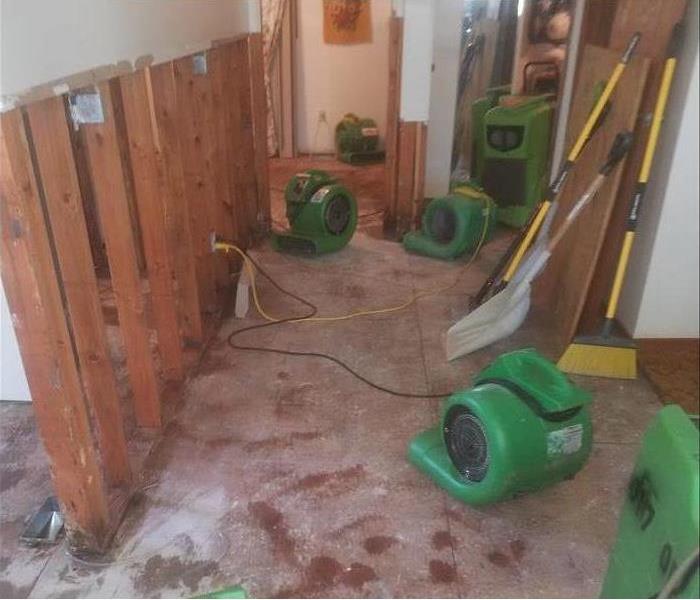Removing Soaked Building Elements
3/28/2022 (Permalink)
Building Elements That Have Been Soaked
Getting your home back in order after a serious flood in Farragut, TN can be a daunting task. The following guide will inform you of the usual procedures employed by qualified restoration professionals, such as ventilation and insulation tear out.
1. Assessment
The first step in any water damage scenario is to assess the extent of moisture entry. After all standing water has been removed and the area is generally safe to enter, the work of bringing the home back to its original condition is only just beginning. Damp materials, such as drywall or carpet padding, can harbor mold growth and may cause surrounding wood surfaces to lose structural integrity. Because these water-retaining elements are often not easily visible, professional identification may be necessary.
2. Removal and Replacement
A professional restorer may opt to tear out affected drywall that has been sufficiently damaged, especially if the insulation behind it is also soaked. Some modern insulation materials made from basalt and steel slag have improved draining properties. These likely won’t need complete replacement as long as they are exposed to sufficient ventilation during the cleanup process to remove all water vapor. Plaster-based wall and ceiling spackling might dissolve and flake away if flooded, and it may also need to be scraped off and replaced at a relatively low cost.
3. Sanitizing and Drying
The final step for most flood or storm restoration processes involves decontamination and vapor expulsion. Any loose belongings that contacted flood water will need chemical or UV decontamination. Your chosen cleanup service will also usually elect to set up ventilation points with air movers and dehumidifiers to ensure that no lingering damp air remains.
With a little extra know-how, homeowners can be prepared for any sort of flood situation. The tear out and replacement of a few building materials can save a lot of money in the long run.






 24/7 Emergency Service
24/7 Emergency Service
